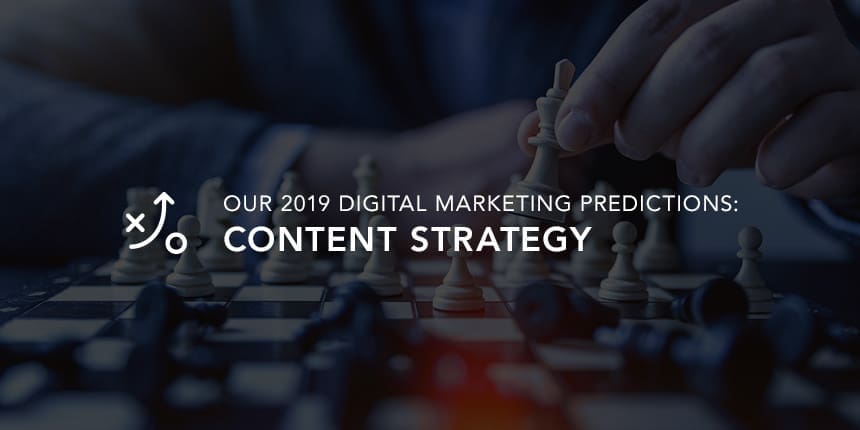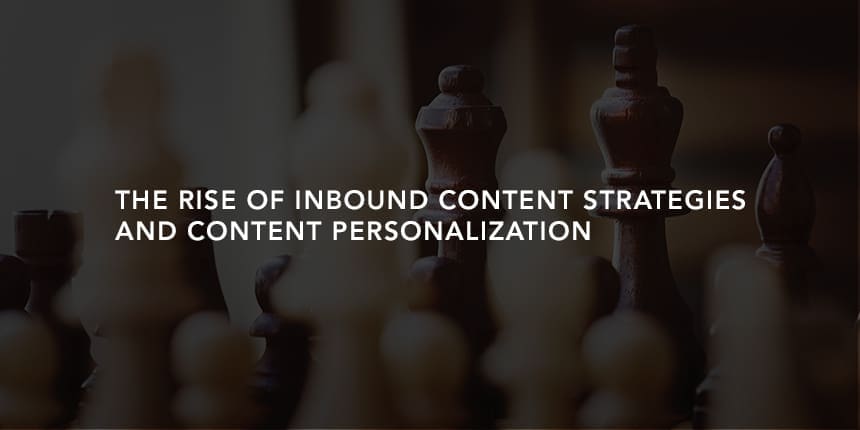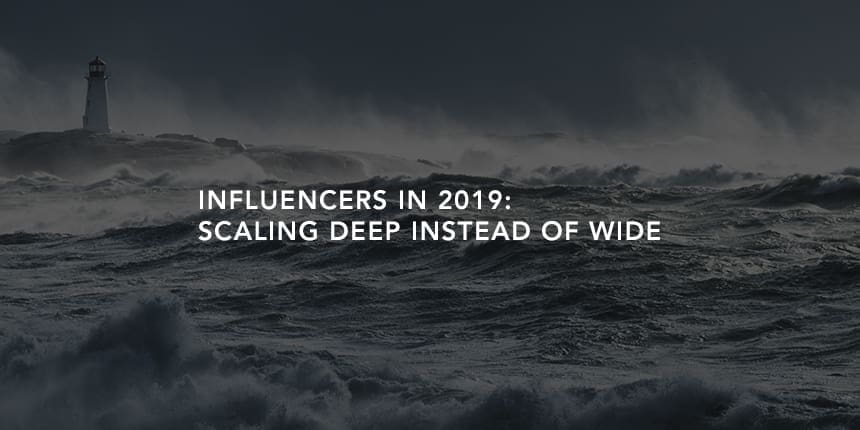
Navigate an unpredictable landscape with actionable, data-driven strategies tailored for your business from the brand down to the local level.

It seems like just yesterday that we were making our content strategy predictions for 2018. Last year, we looked at the rise of voice search, local content strategies, and increased content promotion as the trends set to dominate the industry. Those trends have become the new normal for content strategists, and we’re gazing into our crystal ball once again to bring you our content strategy predictions for 2019:

You might be asking, what is an inbound content strategy?
The purpose of an inbound content strategy is to create owned content that answers your prospect’s questions and/or fulfils their needs. An inbound strategy doesn’t just help you determine which content to create: it helps you format, style, personalise, and distribute that content at the right stage of the buyer’s journey.
Since content is usually the first thing potential buyers see when researching you or your subject matter expertise online, why not make it a relevant, useful, and seamless end-to-end experience?
If you’re an online business and you don’t have an inbound content strategy, this should be a major priority area for you in 2019. Not only will your competition beat you to it, but your customers will demand the content they are looking for in the format they prefer.
Not convinced yet? Check out these stats:

As 2019 approaches, video’s growth and market penetration show no signs of slowing down. In fact, the engagement numbers are rising at a remarkable speed. It’s estimated that by 2019, video will account for 80% of global internet traffic and 85% of traffic in the US. Furthermore, we’re seeing mobile video consumption rise by 100% year over year—with 55% of people watching videos online every day.
So, knowing this, what should marketers be doing to make sure they’re leveraging this content type intelligently?
Subscribe to our monthly newsletter.

Influencer marketing is no longer in its infancy. With its maturation, we’ve seen a refinement and sophistication in its execution that was previously absent. Successful influencers are curating content with the aesthetic eye of an art director—controlling for lighting, composition, and brand alignment. But, as influencers on Instagram and YouTube continue to cash in on their followings, marketers have been left wondering how much longer this play will work with their audiences.
With a whopping 70% of millennial consumers influenced by the recommendations of their peers in buying decisions and 30% of those same consumers more likely to buy a product recommended by a non-celebrity blogger, influencer marketing clearly still has legs.
But, with so many brands leveraging this strategy to build awareness and loyalty, how should brands differentiate themselves in 2019? By moving from buying product influencers to engaging brand ambassadors. Instead of stretching a campaign budget to reach 50 lower-cost influencers, consider amplifying credibility by working with 10 high-value, high-reach influencers willing to come on board as a consistent (unofficial) face of the brand. The authenticity of an influencer who steadily reps the same retail or skincare brand is significant versus another who seems to pop up to rep everything from Sugar Bear Hair “vitamins” to tattoo laser removal.
So, if the first five years of influencer marketing was about going wide, 2019 and onward will be about going deep. Build a community of influencer advocates who will influence their followers based on true alignment with a brand, instead of the latest paid gig.
From the rise of inbound content strategies and content personalisation to intelligently-planned video content and influencer marketing campaigns that are scaled deep, content marketers have a lot to look forward to in 2019.
Here at DAC, we’re incorporating these strategies to help our clients win at every digital touchpoint across the customer lifecycle. To learn more, get in touch with DAC!
Navigate an unpredictable landscape with actionable, data-driven strategies tailored for your business from the brand down to the local level.
Navigate an unpredictable landscape with actionable, data-driven strategies tailored for your business from the brand down to the local level.
Navigate an unpredictable landscape with actionable, data-driven strategies tailored for your business from the brand down to the local level.
Subscribe to our monthly newsletter.